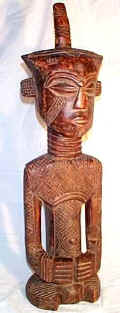 |
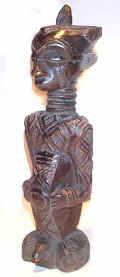 |
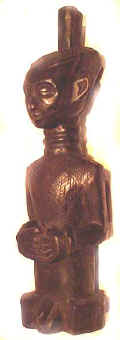 |
||
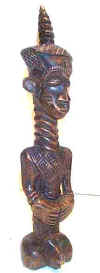 |
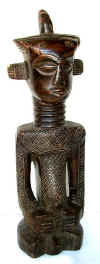 |
 |
 |
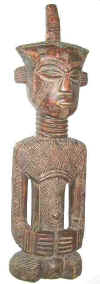 |
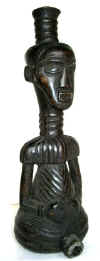 |
 |
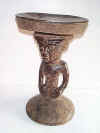 |
TRIBAL AFRICAN ART
DENGESE (BONKESE, DEKESE, NDENGESE, NDENKESE)
Democratic Republic of the Congo
North of
the Kuba kingdom situated in the Democratic Republic of the Congo, across the Sankuru
River, the 12,000 Dengese people claim to be the original population of the area.
Their king, known as the etoshi, reigns over local chiefs
who are assisted by noble men. Powerful groups such as the blacksmith, hunting and
witchcraft societies counterbalance the political power of the chiefs.
While the
Dengese do not use masks, their artists have produced great statues that became part of
museum collections. These fine religious statues may be portraits of ancestors or funeral
effigies. These statues have no lower extremities; the bodies are covered with
scarifications, and figures wear bracelets and have hairdos that resemble those worn by
notables, or totshi: a kind of finely braided bonnet topped with a small, wooden
cylinder covered with fiber. Thus the body becomes a text. The bust and arms lengthen to
accommodate the symbolic inscriptions that recall the relationship between the chief and
those who are subject to his authority. The totshi belonged to an association that
required enormous fees from its future members and an initiation that was performed in two
stages. The statues are the funerary effigies of the totshi and represent them
during the anniversary ceremony of the funeral, which would take place several months
after a death. The female statue is one supposedly depicting the female founder of the
association – although women are not admitted as members. The headdress, a
distorted cone, represents the one placed on the king’s head during his installation
and symbolizes understanding, intelligence, distinction, respect, and unity among chiefs.
The placement of the hands on the belly refers to the common origins of the king’s
subjects, from which he anticipates cooperation. Numerous symbols are carved on the neck
and on the elongated torso and arms in imitation of scarification patterns. The patterns
allude to aphorisms and praise phrases that encode the mysteries of Dengese chiefly
authority. The elongated trunk, covered with a close network of scarification, is entirely
different from that of the head, which is smooth, expressive and dignified. A typical
flared coiffure and geometric scarifications appear on cephalomorphic scepters and
drinking cups also made by Dengese.